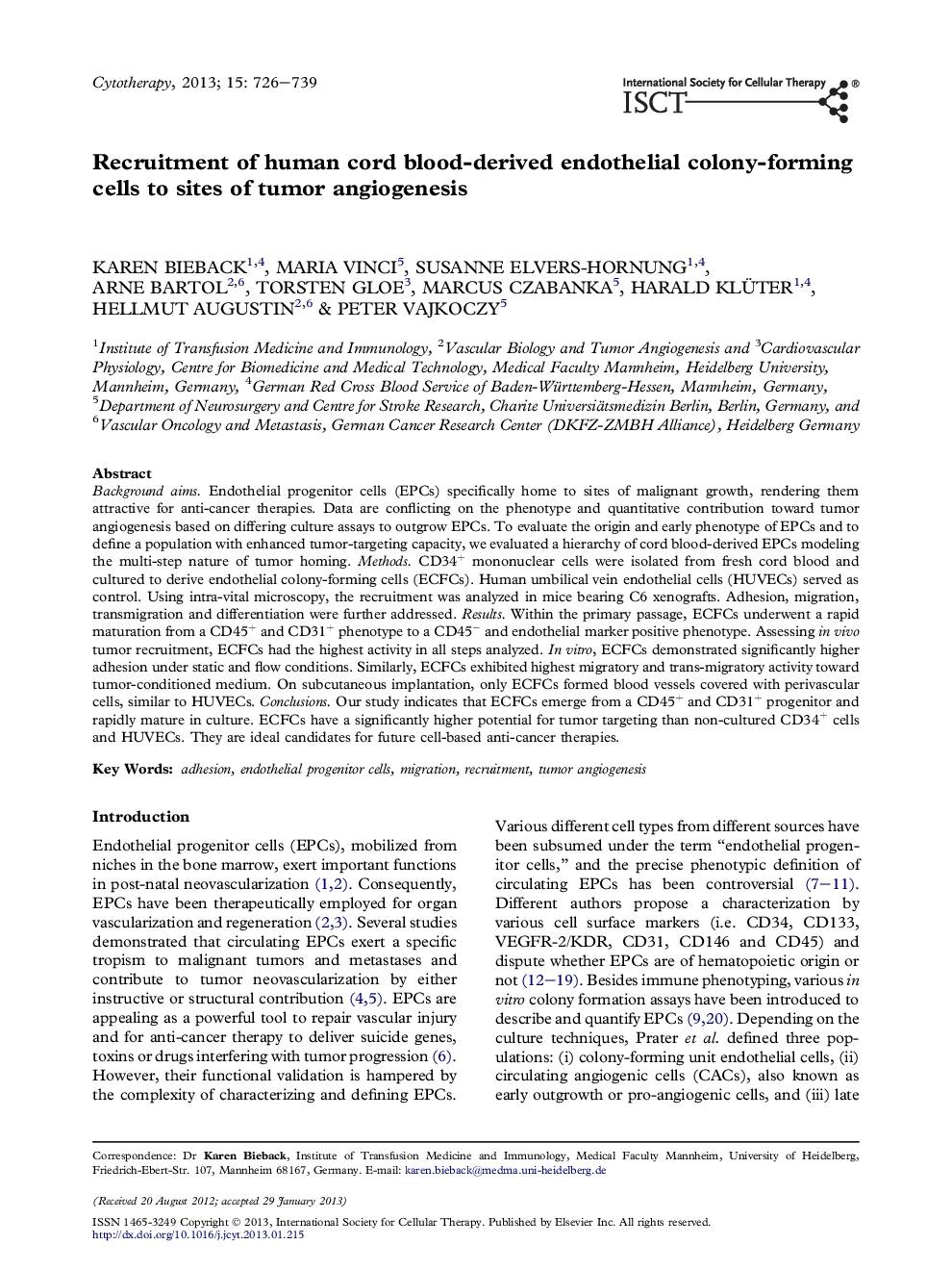| کد مقاله | کد نشریه | سال انتشار | مقاله انگلیسی | نسخه تمام متن |
|---|---|---|---|---|
| 2172519 | 1093550 | 2013 | 14 صفحه PDF | دانلود رایگان |

Background aimsEndothelial progenitor cells (EPCs) specifically home to sites of malignant growth, rendering them attractive for anti-cancer therapies. Data are conflicting on the phenotype and quantitative contribution toward tumor angiogenesis based on differing culture assays to outgrow EPCs. To evaluate the origin and early phenotype of EPCs and to define a population with enhanced tumor-targeting capacity, we evaluated a hierarchy of cord blood-derived EPCs modeling the multi-step nature of tumor homing.MethodsCD34+ mononuclear cells were isolated from fresh cord blood and cultured to derive endothelial colony-forming cells (ECFCs). Human umbilical vein endothelial cells (HUVECs) served as control. Using intra-vital microscopy, the recruitment was analyzed in mice bearing C6 xenografts. Adhesion, migration, transmigration and differentiation were further addressed.ResultsWithin the primary passage, ECFCs underwent a rapid maturation from a CD45+ and CD31+ phenotype to a CD45− and endothelial marker positive phenotype. Assessing in vivo tumor recruitment, ECFCs had the highest activity in all steps analyzed. In vitro, ECFCs demonstrated significantly higher adhesion under static and flow conditions. Similarly, ECFCs exhibited highest migratory and trans-migratory activity toward tumor-conditioned medium. On subcutaneous implantation, only ECFCs formed blood vessels covered with perivascular cells, similar to HUVECs.ConclusionsOur study indicates that ECFCs emerge from a CD45+ and CD31+ progenitor and rapidly mature in culture. ECFCs have a significantly higher potential for tumor targeting than non-cultured CD34+ cells and HUVECs. They are ideal candidates for future cell-based anti-cancer therapies.
Journal: Cytotherapy - Volume 15, Issue 6, June 2013, Pages 726–739